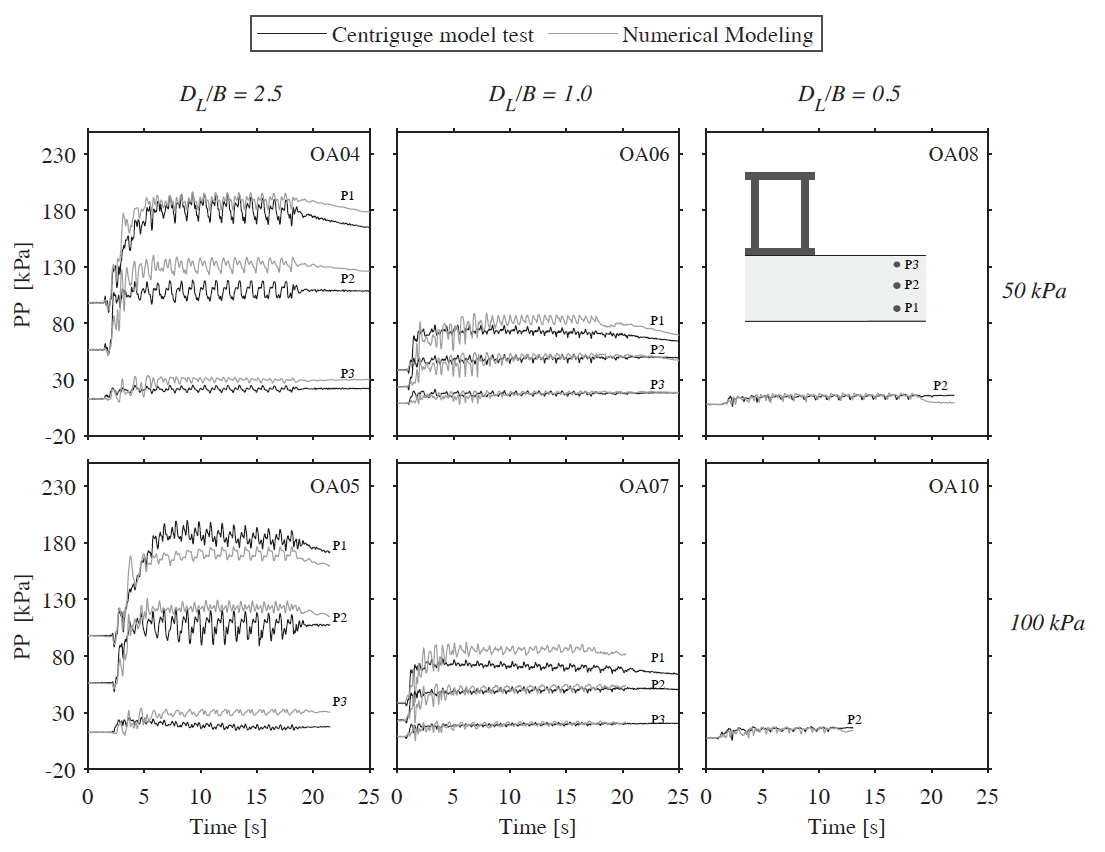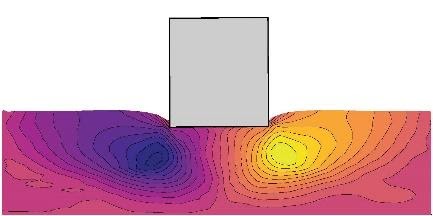Liquefaction: Structure–Soil–Structure Interaction
Earthquake-induced liquefaction can occur during an earthquake in loose sandy soils below the ground water table. Liquefaction is associated with rising pore water pressures, leading to partial or total loss of soil’s shear strength and to the soil behaving like a viscous fluid. The common conditions required for its triggering and the extent of damage it can cause, render it amongst the most catastrophic seismic hazards. Experience from previous earthquakes has revealed its disastrous consequences, including excessive settlement and rotation up to complete toppling, especially in dense urban environments.
Structures on shallow foundations reflect the majority of the building stock and have been extensively studied under conditions of liquefaction. Isolated structures are typically studied and the results are generalised for the dense urban environment. However, earthquake failures show that Structure-Soil-Structure Interaction (SSSI) can be of paramount importance for the vulnerability of an urban area, especially when considering liquefaction-related damage. Due to the increased population density, urban centres are at particularly high risk. Indeed, the most serious liquefaction disasters have always taken place in cities: Niigata 1964, Dagupan 1990, Kobe 1995, Adapazari 1999, Christchurch 2011, and Urayasu 2011. Careful examination of such case histories reveals that SSSI due to the existence of neighbouring structures can be of paramount importance for the survivability of a building, to the point of deciding between no damage and toppling collapse.

Aiming to bridge the apparent gap of knowledge, our work has focused on deriving deeper insights on the seismic response of clusters of buildings resting on shallow foundations on liquefiable soil. Our work started with the validation of numerical analysis tools against centrifuge model tests of structures on shallow foundation, resting on a liquefiable sand (external page J100). A coupled hydro-mechanical analysis was performed, modelling nonlinear soil response with the fully-coupled constitutive model PM4Sand. We have carefully calibrated the model against a broad set of element tests, conducted in our laboratory. We have performed a very strict in-depth assessment of the numerical simulation against 6 centrifuge model tests, comparing pore pressure, acceleration, and settlement time histories, as well as the deformation mechanisms extracted from the centrifuge tests through image analysis. We have also investigated the effect of key model modelling-related uncertainties, such as the distance of the lateral boundaries and the type of the container used in the centrifuge tests.

Our next step is to develop cost-efficient measures for liquefaction mitigation at the scale of clusters of buildings, combining numerical and experimental simulations that were not possible until today. 3D finite element simulations with fully-coupled constitutive models will employ the Euler supercomputer, while innovative experiments will make use of the 5gton-capacity beam centrifuge of the Geotechnical Centrifuge Centre. Our ultimate goal is to develop cost-effective measures applicable to existing building clusters, contributing to the advancement of the state-of-the-art and to the global initiative of developing resilient cities.
Selected recent publications

Kassas, K., Adamidis, O., Gerolymos, N., Anastasopoulos, I., (2020). ‘Numerical modelling of a structure with shallow strip foundation during earthquake-induced liquefaction’, Géotechnique, pp. 1–56. doi: 10.1680/jgeot.19.P.277 (external page J100)